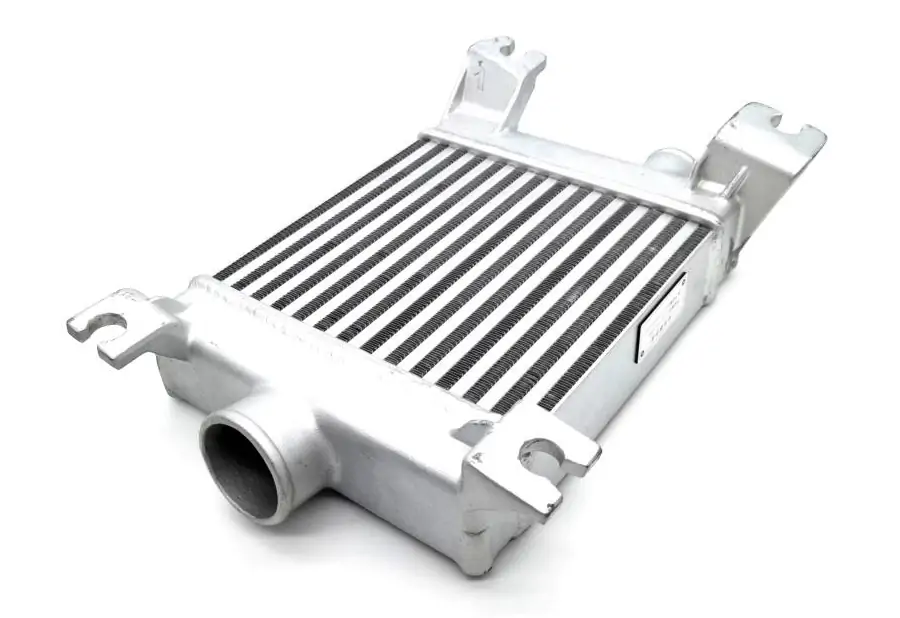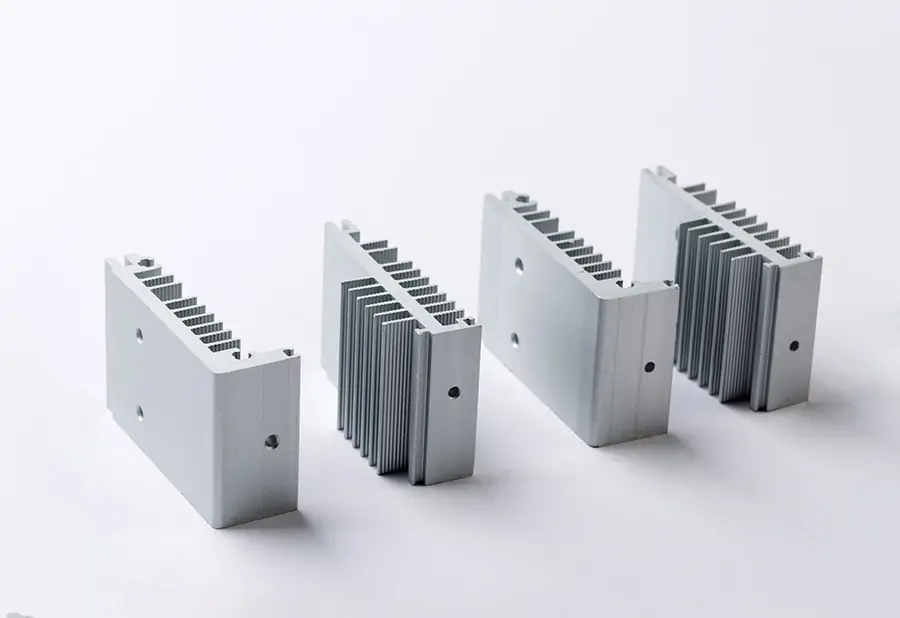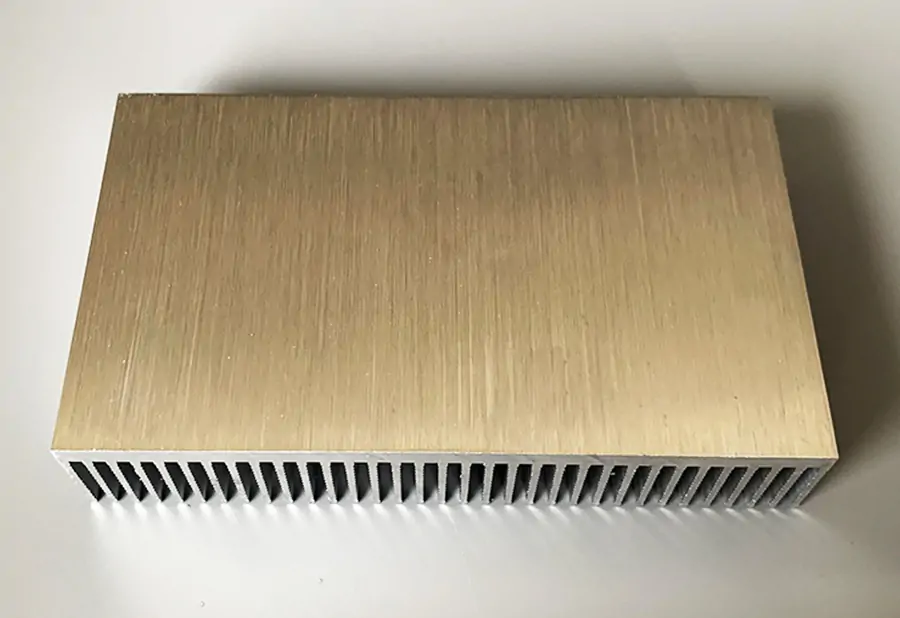Are you tired of your electronic devices overheating and slowing down? If your answer is yes, then you're in the right place. In this article, we will explore how to choose the right heatsink radiator for your electronic devices and maximize their efficiency.
With the constant demand for higher performance, electronic devices are prone to overheating, leading to reduced speed and potential damage. A well-designed heatsink radiator can effectively dissipate heat from your device, keeping it functioning optimally.
But how do you choose the right heatsink radiator for your specific device? Factors such as size, material, and cooling capacity all play a crucial role in determining the performance of your heatsink. By understanding these factors and following some best practices, you can enhance the efficiency and longevity of your electronic devices.
So, whether you're a gaming enthusiast, a PC builder, or a tech-savvy individual looking to optimize your device's performance, this article will provide you with the insights you need to make an informed decision.
Get ready to dive into the world of heatsink radiators and unlock the full potential of your electronic devices. Let's get started!
The importance of heatsink radiators in electronic devices
Electronic devices have become an integral part of our lives, and with the constant demand for higher performance, they are prone to overheating. This can lead to reduced speed, potential damage to internal components, and even complete system failure. That's where heatsink radiators come into play.
A heatsink radiator is a device that helps dissipate heat generated by electronic components such as processors,graphics cards, and power modules. It works by increasing the surface area available for heat transfer and accelerating the cooling process. By effectively removing excess heat, heatsink radiators help keep your devices operating at optimal temperature levels, ensuring smooth performance and prolonging their lifespan.
Understanding the basics of heatsink radiators
Before diving into the selection process, it's essential to understand the basics of heatsink radiators. A heatsink is typically made of a thermally conductive material, such as aluminum or copper, with a large surface area and fins. The fins help increase the surface area, allowing for better heat dissipation.
When a heatsink is attached to a heat-generating electronic component, such as a CPU, it absorbs the heat and transfers it to the surrounding air. The fins on the heatsink increase the contact area with the air, facilitating the transfer of heat through convection. This process effectively cools down the electronic component and prevents it from overheating.
Types of heatsinks and their applications
Heatsinks come in various shapes and sizes, each designed for specific applications. Let's take a closer look at some common types of heatsinks and their respective applications.
1. Passive Heatsinks: Passive heatsinks rely solely on natural convection to dissipate heat. They do not require any fans or additional power supply, making them suitable for low-power electronic devices such as smartphones and tablets.
2. Active Heatsinks: Active heatsinks, also known as fan-cooled heatsinks, incorporate a fan to enhance heat dissipation. They are commonly used in high-performance devices like gaming PCs and servers, where efficient cooling is crucial.
3. Heatpipe Heatsinks: Heatpipe heatsinks utilize heatpipes, which are hollow copper tubes filled with a working fluid. The heatpipes efficiently transfer heat from the heat source to the heatsink, enabling better thermal management. These heatsinks are ideal for devices with limited airflow, such as laptops and small form factor PCs.
4. Liquid Cooling Heatsinks: Liquid cooling heatsinks, also known as water blocks, use a liquid coolant to absorb heat from electronic components. This coolant is then circulated to a radiator, where the heat is dissipated into the air. Liquid cooling is often preferred by overclockers and enthusiasts seeking maximum heat dissipation.
Factors to consider when choosing a heatsink radiator
When selecting a heatsink radiator for your electronic device, several factors come into play. Understanding these factors will help you make an informed decision and ensure optimal performance. Let's explore the key considerations.
### 1. Size and form factor
The size and form factor of the heatsink radiator should match the available space in your device. If the heatsink is too large, it may not fit properly, leading to installation challenges and potential damage to other components. On the other hand, an undersized heatsink will not provide sufficient cooling.
Measure the available space in your device and choose a heatsink radiator that fits comfortably, allowing for proper airflow and efficient heat dissipation.
### 2. Thermal resistance
Thermal resistance is a measure of how effectively a heatsink transfers heat from the electronic component to the surrounding air. It is crucial to select a heatsink radiator with low thermal resistance to ensure efficient heat dissipation.
Look for heatsinks with a low thermal resistance rating, often expressed in degrees Celsius per watt (°C/W). A lower thermal resistance indicates better heat transfer capabilities.
### 3. Cooling capacity
The cooling capacity of a heatsink radiator determines its ability to dissipate heat. It is influenced by factors such as the surface area, fin density, and airflow. A larger surface area and higher fin density generally result in better cooling performance.
Consider the power dissipation of your electronic device and choose a heatsink radiator with adequate cooling capacity to handle the heat generated. You can refer to the device's specifications or consult with a technical expert for guidance.
### 4. Noise level
If noise is a concern for you, especially in environments that require quiet operation, consider the noise level produced by the heatsink's fan. Fans with larger diameters and lower RPM (rotations per minute) tend to generate less noise while still providing sufficient airflow.
Opt for heatsink radiators with fan designs that prioritize quiet operation without compromising cooling performance.
### 5. Compatibility and ease of installation
Ensure that the heatsink radiator you choose is compatible with your electronic device's socket or mounting mechanism. Different devices may require specific heatsink designs or mounting brackets.
Additionally, consider the ease of installation. Some heatsinks come with pre-applied thermal paste or thermal pads, making installation hassle-free. Others may require manual application of thermal interface material.Choose a heatsink radiator that aligns with your comfort level and technical expertise.
### 6. Cost-effectiveness
Cost is an important factor to consider when selecting a heatsink radiator. While high-performance heatsinks may offer superior cooling capabilities, they may also come with a higher price tag. Evaluate your budget and strike a balance between performance and cost-effectiveness.
Remember that investing in a quality heatsink radiator is a long-term investment in the performance and longevity of your electronic device.
Calculating heat dissipation requirements for your electronic device
To determine the heat dissipation requirements for your electronic device, you need to consider the power dissipation of the components and the thermal design power (TDP). The TDP is the maximum amount of heat that the device is designed to dissipate under typical operating conditions.
Check the specifications of your electronic components or consult the manufacturer's documentation to find the TDP values. Add up the TDP values of all the components that require cooling to get the total heat dissipation requirement.
The heatsink radiator you choose should have a cooling capacity that matches or exceeds the total heat dissipation requirement. This ensures that your device operates within safe temperature limits and avoids overheating issues.
Evaluating different heatsink materials and designs
The choice of material and design significantly impacts the performance of a heatsink radiator. Let's explore some commonly used materials and designs and their respective advantages.
### 1. Aluminum heatsinks
Aluminum is a popular choice for heatsink materials due to its excellent thermal conductivity, light weight, and cost-effectiveness. Aluminum heatsinks offer good heat dissipation capabilities and are commonly used in a wide range of electronic devices.
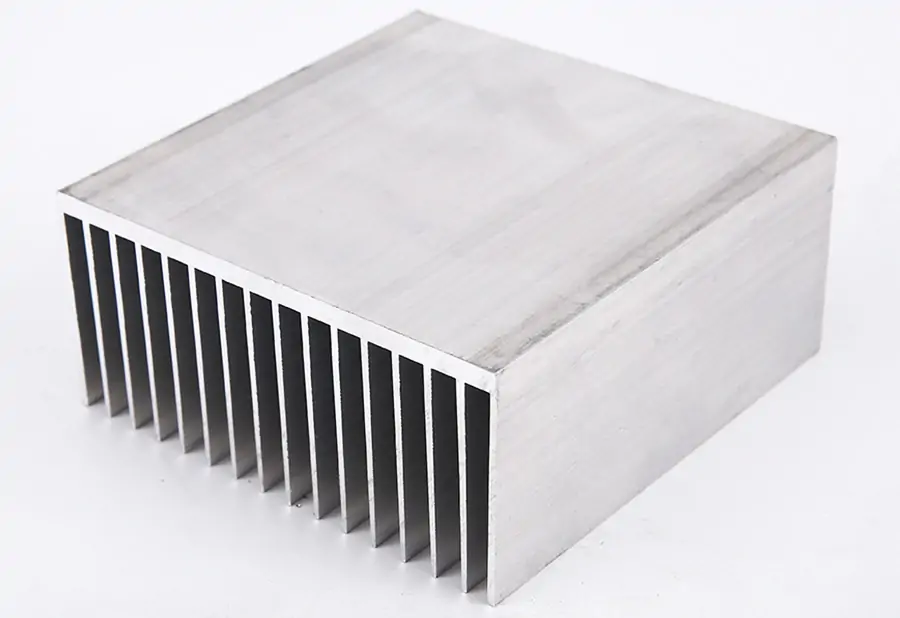
They are particularly suitable for low to medium-power applications where cost and weight are important considerations.
### 2. Copper heatsinks
Copper is known for its superior thermal conductivity, making it an excellent choice for high-performance heatsinks. Copper heatsinks offer better heat transfer capabilities than aluminum heatsinks, allowing for more efficient cooling.
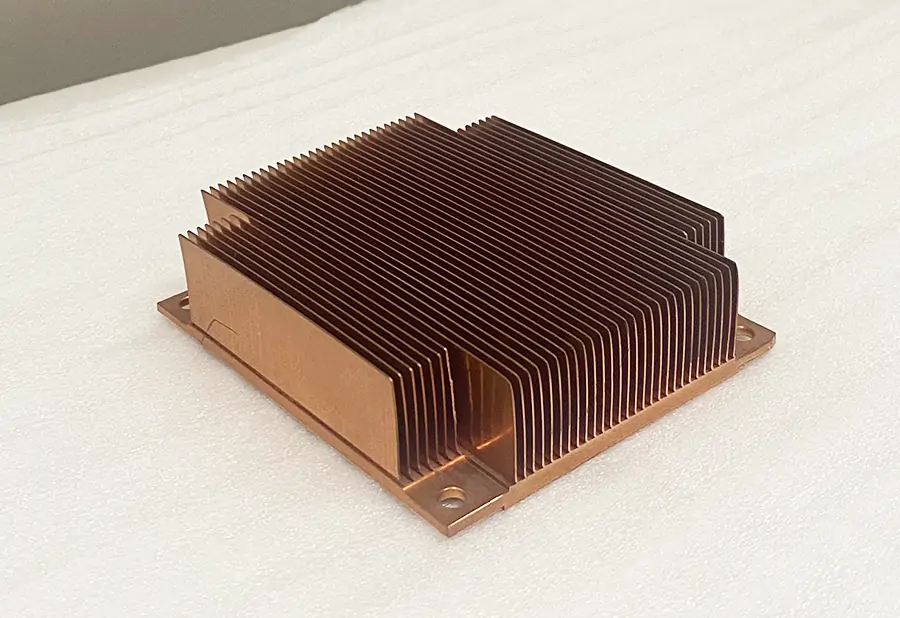
However, copper heatsinks tend to be heavier and more expensive than their aluminum counterparts. They are often preferred in applications that require maximum heat dissipation, such as high-end gaming PCs and overclocking setups.
### 3. Vapor chamber heatsinks
Vapor chamber heatsinks are a relatively new technology that combines the advantages of heatpipes and flat plate heatsinks. They consist of a sealed chamber filled with a small amount of working fluid. This fluid vaporizes when exposed to heat, transferring the heat to the condenser region of the chamber. The condensed fluid then flows back to the heat source by capillary action.
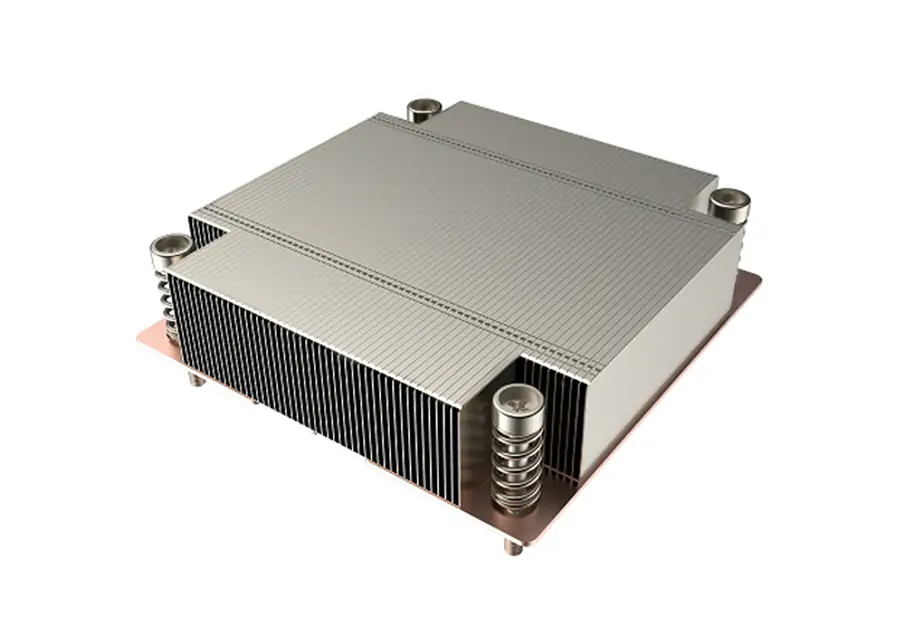
Vapor chamber heatsinks offer excellent heat spreading capabilities and are often used in high-power electronic devices that require efficient cooling. They provide uniform temperature distribution across the heatsink surface, reducing hotspots and improving overall performance.
Optimizing heatsink placement for maximum efficiency
Proper heatsink placement is crucial to ensure maximum efficiency and heat dissipation. Here are some key considerations to optimize heatsink placement:
1. Alignment with heat source: Ensure that the base of the heatsink makes full contact with the heat-generating component, such as the CPU or GPU. This maximizes heat transfer and minimizes thermal resistance.
2. Orientation: Consider the orientation of the heatsink and the direction of airflow within your device. Align the heatsink fins in a way that allows for efficient air movement and heat dissipation. In desktop PCs, for example, orienting the heatsink vertically can take advantage of the natural upward movement of hot air.
3. Clearance and airflow: Provide sufficient clearance around the heatsink to allow for proper airflow. Avoid obstructing the heatsink with cables or other components that could restrict airflow and impede cooling.
4. Thermal interface material: Use a high-quality thermal interface material, such as thermal paste or thermal pads, to ensure optimal heat transfer between the heatsink and the heat source. Proper application of the thermal interface material is essential for achieving maximum efficiency.
How to properly install and maintain heatsink radiators
Installing a heatsink radiator may seem daunting at first, but with proper guidance, it can be a straightforward process. Here are some general steps to follow:
1. Prepare the heatsink: Clean the base of the heatsink to remove any dust or debris. If necessary, apply thermal paste or thermal pads to enhance heat transfer.
2. Prepare the heat source: Clean the heat source, such as the CPU or GPU, using isopropyl alcohol and a lint-free cloth. Ensure that the surface is free from any previous thermal interface material.
3. Attach the heatsink: Carefully align the heatsink with the heat source and secure it in place using the appropriate mounting mechanism. Follow the manufacturer's instructions for your specific heatsink model.
4. Connect the fan (if applicable): If your heatsink radiator includes a fan, connect it to the appropriate power source, ensuring proper orientation for airflow.
Once installed, it is important to regularly maintain your heatsink radiator to ensure optimal performance.Here are some maintenance tips:
- Clean the heatsink: Periodically clean the heatsink to remove dust and debris that can accumulate over time.This can be done using compressed air or a soft brush.
- Monitor fan performance: Keep an eye on the fan's RPM and ensure it is functioning correctly. If you notice any unusual noises or a decrease in airflow, consider cleaning or replacing the fan.
- Check for proper contact: Occasionally check the contact between the heatsink and the heat source. If necessary, reapply thermal interface material to ensure optimal heat transfer.
Common mistakes to avoid when selecting a heatsink radiator
Choosing the right heatsink radiator can be challenging, especially with the wide range of options available.Here are some common mistakes to avoid:
- Ignoring the TDP: Failing to consider the total heat dissipation requirement of your electronic device can lead to inadequate cooling. Always calculate the TDP and choose a heatsink radiator that matches or exceeds the requirements.
- Overlooking compatibility: Ensure that the heatsink radiator is compatible with your device's socket or mounting mechanism. Using an incompatible heatsink can result in installation difficulties and poor performance.
- Prioritizing aesthetics over performance: While the appearance of a heatsink radiator may be important to some, it should not be the sole deciding factor. Focus on performance, thermal capabilities, and compatibility before considering aesthetics.
- Neglecting maintenance: Regular maintenance is crucial for optimal heatsink radiator performance.Neglecting to clean the heatsink or monitor fan performance can lead to reduced cooling efficiency and potential overheating issues.
Conclusion: Choosing the right heatsink radiator for your electronic device
As electronic devices continue to push the boundaries of performance, efficient cooling becomes increasingly important. Selecting the right heatsink radiator can make a significant difference in maximizing the efficiency and longevity of your devices.
Consider factors such as size, thermal resistance, cooling capacity, and compatibility when choosing a heatsink radiator. Evaluate different materials and designs to find the best fit for your specific requirements. Optimize heatsink placement, follow proper installation procedures, and regularly maintain your heatsink radiator for optimal performance.
With the insights provided in this article, you are now equipped to make an informed decision and unlock the full potential of your electronic devices. Say goodbye to overheating and enjoy smooth, efficient operation.
So, whether you're a gaming enthusiast, a PC builder, or a tech-savvy individual looking to optimize your device's performance, choosing the right heatsink radiator is a crucial step. By understanding the importance of heatsink radiators, evaluating different types, considering key factors, and following best practices in installation and maintenance, you can ensure the efficient and reliable operation of your electronic devices for years to come.
Get ready to dive into the world of heatsink radiators and unlock the full potential of your electronic devices.
Let's get started!


